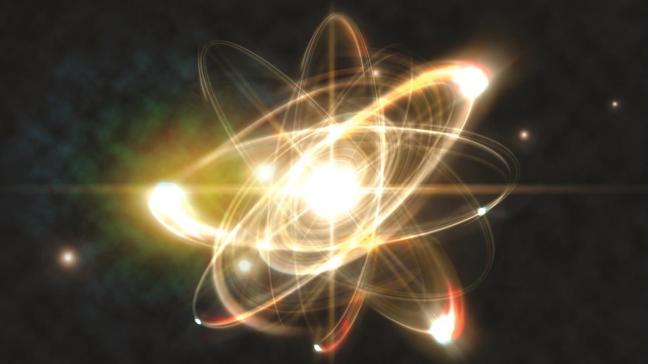 |
| 1. Hydrogen fuel, 2. Heat passes through the hydrogen layer to the surface, 3. Heat reaching the surface is radiated away, 4. Helium core |
| The Sun is a giant nuclear reactor that constantly transforms atoms of hydrogen into helium and produces heat in the process. What is crucial to this process however is the incredible precision with which these reactions are balanced within the Sun. The slightest change in any of the forces governing these reactions would result in their failure or in a catastrophic runaway explosion. |
The Universe’s Alchemy Labs: Red Giants (Part 1)
 The temperature required to overcome the reluctance of nuclei to change is nearly 10 million degrees Celsius. This is why “alchemy” in the real sense takes place only in stars. In medium-sized stars like the Sun, the enormous energy being radiated is the result of hydrogen being fused into helium.
The temperature required to overcome the reluctance of nuclei to change is nearly 10 million degrees Celsius. This is why “alchemy” in the real sense takes place only in stars. In medium-sized stars like the Sun, the enormous energy being radiated is the result of hydrogen being fused into helium.
Continue reading The Universe’s Alchemy Labs: Red Giants (Part 1)
Part 2: Resonance and Double Resonance
 |
| 1. Helium nucleus, 2. Carbon nucleus, 3. The extraordinarily unstable isotope of beryllium that is formed in red giants, 4. Normal beryllium as found on Earth. |
Resonance is defined as the harmony of frequencies (vibrations) of two different materials.
The Rhythm of The Atoms

If the world’s finest minds can unravel only with difficulty the deeper workings of nature, how could it be supposed that those workings are merely a mindless accident, a product of blind chance? (Paul Davies, Professor of Theoretical Physics)
Scientists are in general agreement that, on the basis of calculations, the Big Bang took place about 17 billion years ago. All the matter making up the universe was created from nothingness but with the wonderful Creation that we talked about in the first two chapters. Nevertheless, the universe that emerged from the Big Bang could have been much different from the one that did emerge–ours.
